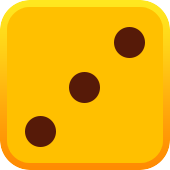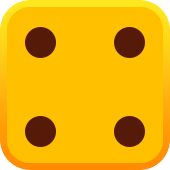












Craps is one of the few casino games where energy, interaction, and fast-paced excitement all collide. It blends deep historical roots with modern strategy, making it both a game of probability and a communal experience. Whether you’re a beginner or an experienced dice shooter, understanding the origins, odds, etiquette, and cultural impact of craps enhances the entire experience.
Craps has one of the most fascinating and diverse histories of any casino game. It evolved over centuries, crossing cultures, continents, and social classes before becoming the high-energy dice game we know today. Its origins stretch back to ancient times, and each era added rules, traditions, and superstitions that shaped modern craps.
Many historians believe craps traces back to Roman soldiers, who played dice-like games using carved knuckle bones. These early versions were simple but relied on the same concept of predicting outcomes from randomized throws, paving the way for modern dice play.
Craps evolved from a medieval English dice game called Hazard. Popular among nobility and commoners alike, Hazard had complex rules but introduced the foundational idea of winning or losing on specific dice totals.
Craps crossed the Atlantic in the 19th century, where it became a popular street game in the United States. Simpler rules, faster rounds, and a more accessible structure helped transform craps into a widespread pastime—often played with nothing but a pair of dice and a curb.
By the mid-20th century, craps tables became staples of Las Vegas casinos. Standardized layouts, regulated odds, and the introduction of features like “free odds” bets helped formalize craps as both a strategic and sociable casino game.
Understanding the odds in craps is essential for anyone who wants to play strategically. Because every outcome of the dice is governed by mathematics, players who grasp probability can immediately distinguish between smart bets and high-risk wagers. This section breaks down true odds, house payouts, and the statistical reality behind every roll.
The heart of craps strategy lies in understanding the difference between true odds (mathematical probability) and the casino’s payout odds. The mismatch between the two is where the house gains its advantage.
Every bet on the table carries a distinct house edge, from the low-risk Pass Line bet to the high-edge proposition bets. Knowing these percentages allows players to avoid costly wagers and prioritize smart ones.
With two dice, there are 36 possible outcomes. Some totals—like 7—appear more frequently due to multiple combination possibilities. Understanding distribution helps players anticipate trends and make probability-informed decisions.
Free odds bets carry zero house edge, making them the most mathematically favorable wagers in the entire casino. They pay true odds and are available only after establishing a point on the Pass or Don’t Pass line.
Craps is one of the most social games in the casino, and with that comes a unique culture of etiquette, unspoken rules, and long-standing superstitions. Understanding these elements not only improves the experience for everyone at the table but also helps new players blend in with confidence.
Craps is highly social, and with that comes an unspoken code: handle the dice with one hand, avoid tossing them too high, never pass them off the table, and keep your hands away from the layout during throws.
Many players believe in lucky shooters, cursed dice, or jinxing numbers by speaking them aloud. While these superstitions have no statistical basis, they play a major role in the atmosphere and rituals of the table.
Unlike solitary games like slots, craps thrives on collective excitement. Players cheer, groan, and celebrate together, creating a team-like environment unique within the casino floor.
Online craps removes the social and tactile aspects but offers faster rounds, lower bets, and streamlined rules. Land-based tables, however, deliver the full communal energy and traditional rituals of the game. Explore the best slot online games available at Lucky Tiger Casino and enjoy high-quality gameplay.
While craps is ultimately a game of chance, many players use structured strategies to manage risk, extend bankroll longevity, and capitalize on favorable streaks. Advanced methods balance probability, discipline, and betting efficiency—helping players approach the game with a more analytical mindset.
This method balances safety and profit potential by keeping three bets working at all times: the Pass Line and two Come bets backed with odds. It smooths variance and suits disciplined players.
The Iron Cross covers nearly every possible roll except 7. While it produces frequent wins, it carries a hidden vulnerability: the high probability of eventually hitting a 7 wipes out its small incremental gains.
Some players claim they can influence dice outcomes through controlled shooting techniques. While the casino treats such attempts skeptically, the debate continues over whether micro-control is physically achievable.
Smart progressions—like increasing odds instead of flat bets—help maximize returns while minimizing exposure to high-edge wagers. The key lies in disciplined bankroll management rather than aggressive chasing.
Craps has long been associated with glamour, suspense, and high-stakes thrills. Its fast-paced nature and dramatic wins make it a natural fit for movies, celebrity stories, and legendary gambling moments. Over time, it has become one of the most iconic symbols of casino culture worldwide.
Craps has appeared in iconic films like Diamonds Are Forever, Hard Eight, and Ocean’s Eleven, often symbolizing risk-taking and high-stakes glamour.
Stars such as Ben Affleck and Nick Cannon are known for frequenting craps tables, adding even more flair and mystique to the game’s cultural presence.
From Patricia DeMauro’s legendary 154-roll streak to extraordinary hot shooters in casinos worldwide, record-setting sessions have cemented craps as a game capable of unforgettable moments. Before you play, make sure to read the terms on the bonus page so you know the wagering requirements.




